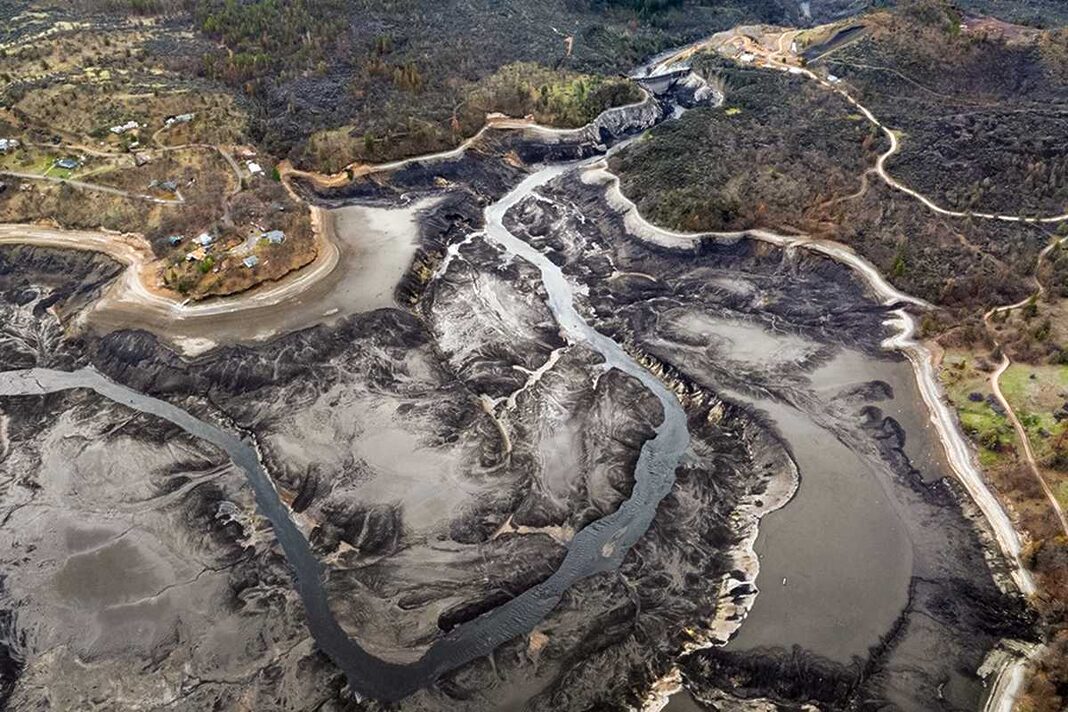
SISKIYOU COUNTY, Calif.—As the Klamath Dam Removal Project—the largest in the nation’s history—nears completion, reaction to the aftermath has been mixed, ranging from celebration to devastation.
Proponents are celebrating the four dam removals after their decades-long battle to restore the free-flowing river, while other residents and property owners say the destruction of the dams and loss of the manmade lakes is crippling tourism and recreation activities such as camping, water skiing, sport fishing, and boating, as well as hurting wildlife and increasing wildfire risks.
Environmental nonprofit groups and local Native American tribes have pushed for decades to demolish the dams along the Klamath River, saying they damaged the ecology of the river and blocked upstream spawning habitat, causing a decline in salmon populations.
The 263-mile river drains a basin spanning about 12,000 square miles and traverses the California–Oregon border from its headwaters in Oregon through the Cascade Mountains to the Pacific Ocean south of Crescent City, California.
The demolition of the four dams—John C. Boyle, Copco 1, Copco 2, and Iron Gate—which were built between 1911 and 1962, is expected to be complete by late August.
Klamath River Renewal Corp. (KRRC), a nonprofit coalition formed to manage the dam removal and river restoration project, has a 15-member board of directors, including nine members appointed by the California and Oregon governors, one member from each of the Karuk and Yurok tribes, one from fisheries groups, and two appointed collectively by environmental groups such as American Rivers, California Trout, Klamath Riverkeeper, Sustainable Northwest, and Trout Unlimited.
The project is intended to “improve the habitat and health of fisheries by allowing salmon, steelhead, and lamprey access to over 400 stream-miles of historic spawning habitat upstream of the dams,” prevent stagnant reservoirs from increasing water temperatures in the summer, and help alleviate poor habitat conditions that contribute to algae growth and fish diseases, according to KRRC.
Some Residents Devastated
As she stood at her family’s cabins in Northern California looking out over the Klamath River, where Copco Lake once flourished with wildlife and recreation, Chrissie Reynolds said she was overwhelmed with sadness.
By Brad Jones






